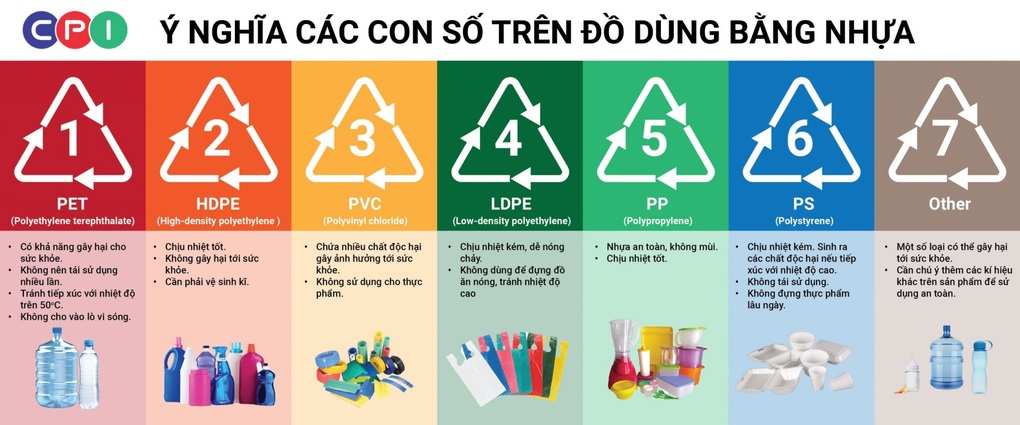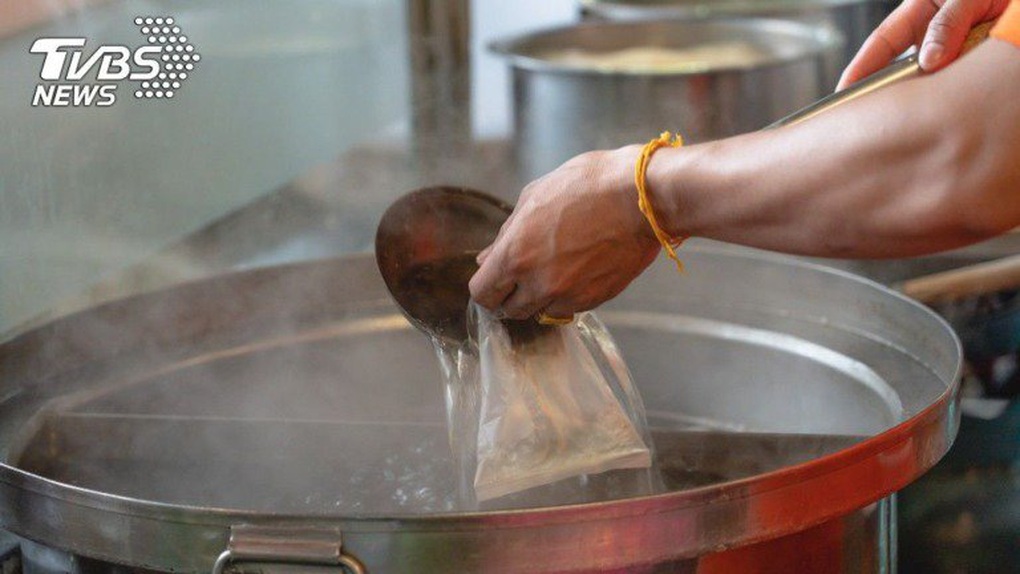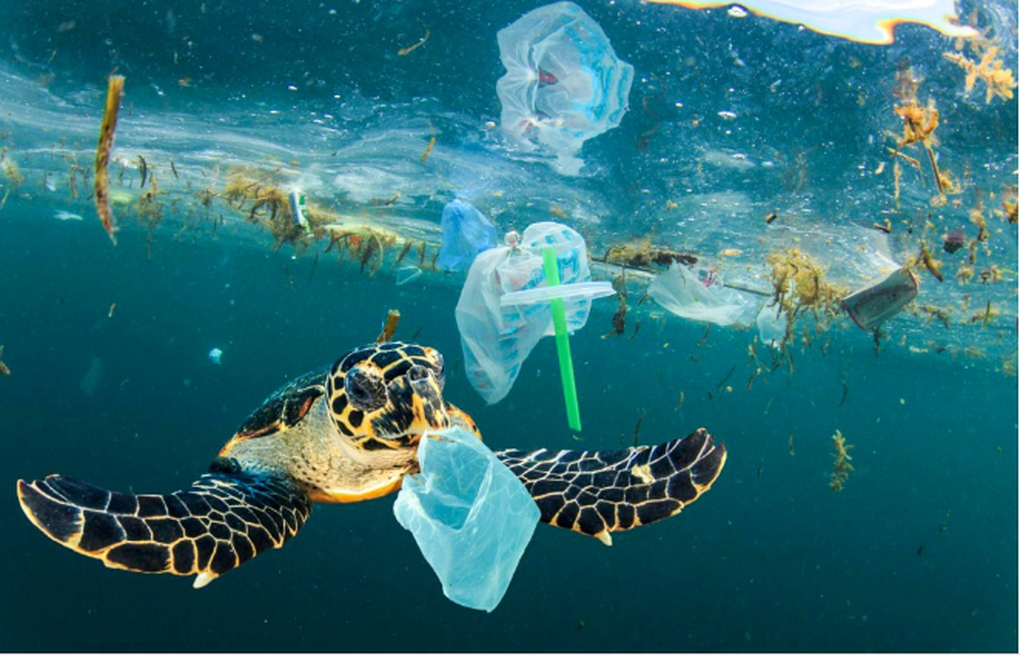Toxins from disposable plastic items can cause cancer
Since October, Hanoi has been asked to pilot a ban on single-use plastic at beverage shops and restaurants in Ring Road 1.
According to Decree 08/2022, disposable plastic products include trays, food containers, bowls, cups, straws, and other utensils containing plastic components, designed for single use.
In addition, non-biodegradable plastic packaging is also restricted, including those made from PE, PP, PS, PVC, PET plastic, which persists for a long time in soil, water and landfills.

Plastic classification table by code (Source: Getty).
Associate Professor Dr. Nguyen Duy Thinh, former lecturer at the Institute of Food Biotechnology, Hanoi University of Science and Technology, said: Most plastic products, especially foam boxes, often contain BPA - a substance that has been confirmed by the International Agency for Research on Cancer (IARC) to be able to damage the brain, cause hepatitis, endocrine disorders, infertility and cancer.
In addition, improper use of foam boxes in the process of containing and preserving food can also create toxic substances.
In principle, these items are not used for hot food. But in reality, many food stores now use plastic bags and disposable plastic items to contain food.

Many food stores use plastic bags and disposable plastic items to contain food (Photo: TVBS News).
When plastic bags, plastic boxes or food wrap containing rice, soup, or hot food are at about 80 degrees Celsius, additives such as plasticizers, colorants, lead, cadmium, etc. can easily leach into the food, then be absorbed into the human body during use.
On the surface of plastic dishes or plastic water bottles, there are millions of microplastic particles that easily stick to food or float in water.
In Vietnam, the Food Safety Department ( Ministry of Health ) said that foam boxes currently circulating on the market are mainly made from polystyrene, which is super light in weight because air accounts for 95%, polystyrene accounts for only 5%.
In terms of mechanism, these microplastic particles are smaller than red blood cells, so they easily penetrate the colon wall, blood vessel wall, bronchial wall and trigger chronic inflammatory reactions, oxidation, and DNA chain damage if we are exposed to them repeatedly and for a long period of many years.
Single-use plastic enters the human food chain
Not only that, plastic bags also enter the human food chain through fish and other animals.

Plastic bags enter the human food chain (Photo: onegreenplanet.org).
Every online purchase is wrapped in multiple layers of shockproof plastic. Every takeaway meal comes with a plastic box, a plastic spoon, and a plastic bag. Every morning coffee comes with a plastic cup, a plastic lid, and a plastic straw.
All products are used for only a few minutes, but after being thrown into the environment can last for hundreds of years.
A common misconception is that plastics do not “degrade” but “degrade”. Degradation is a biological process where material is completely broken down by microorganisms.
However, traditional plastics such as PET, PE, PP cannot decompose by themselves. Under the influence of sunlight, time and friction, they only break into small pieces, gradually turning into microplastics.
Those microplastic particles seep into fish intestines, shrimp meat, soak into vegetable soil and finally return to human dining tables.
According to a 2019 WWF study, the average person can absorb 5 grams of microplastics per week - equivalent to a credit card.
Experts recommend that if people have to use styrofoam or plastic boxes, they should only store cold foods, but this is temporary and should not be prolonged.

If you use a PP plastic container to heat water in the microwave for 3 minutes, it can release billions of microplastic particles and nano-microplastic particles (Photo: Dr. Vu Thi Tan)
Do not use regular plastic containers to store hot food or to heat food in the microwave. Instead, use containers made of solid, heat-resistant plastic, the types recommended for microwave use.
Source: https://dantri.com.vn/suc-khoe/moi-nguy-hai-nhua-mot-lan-ngay-tren-ban-an-20250718094920557.htm



































![[Photo] Soldiers guard the fire and protect the forest](https://vphoto.vietnam.vn/thumb/1200x675/vietnam/resource/IMAGE/2025/9/27/7cab6a2afcf543558a98f4d87e9aaf95)


































































Comment (0)